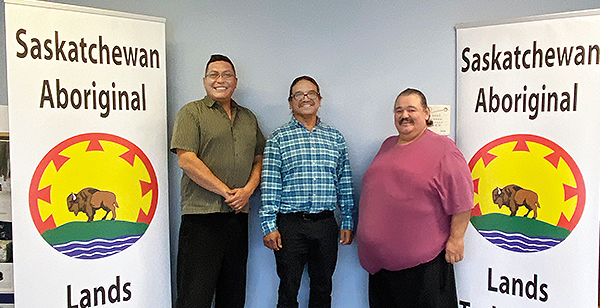Map making important for First Nations land technicians
- Julia Peterson | December 01, 2020
Saskatchewan Aboriginal Land Technicians (SALT) is mapping out a bright future.
SALT, an organization that brings together Indigenous land technicians, INAC land managers and academics to share resources on land management in Saskatchewan, recently opened its first physical office at Muskeg Lake Urban Reserve in Saskatoon.
Leonard Tipewan, SALT’s executive director, says watching land managers’ innovative approaches to their work in Saskatchewan makes 2020 an exciting time to be a land technician.
“There’s land use planning, resource mapping, traditional mapping and agricultural mapping,” he said. “But maps also have the power to influence the social dynamics within communities. By using maps, we can make better decisions when it comes to health.
“For example, we could do COVID mapping. So maps can really influence the socio-economic well-being of the community.”
Tipewan also believes it’s important for members of Saskatchewan First Nations to become proficient in new mapping technologies and land-management techniques, instead of needing to rely on outside experts.
“It’s important to have the local knowledge - the pertinent, relevant local knowledge - to influence social decisions and administrative decisions,” he said.
“It’s important to have traditional knowledge, having an individual who is knowledgeable about the local area, the flora and fauna, migratory paths, the hunting and gathering.
“That information influences the social dynamics within the community. So when it comes to map-making, that knowledge is crucial.”
A recent virtual workshop on Indigenous mapping practices, hosted jointly by the First Nations University of Canada and the Vancouver-based Firelight Group, highlighted the technologies and organizational partnerships available to Indigenous communities.
“It’s exciting to have the First Nations understand the availability of the resources out there,” said Tipewan. “Whether it’s Google or QGIS or NASA software, there is availability. And some of these are for-fee services, but some are open-source.”
GIS, or a geographic information system, is a particularly powerful digital mapping tool. Based in geography, it allows users to visually manage and organize data. Tipewan hopes more land technicians will be inspired to try it out.
“Understanding the capabilities of GIS is paramount for First Nations,” he said. “The software is essential in performing administrative tasks, making decisions, and has great capabilities in realizing relationships with the land, with technology and with personal information”
“You’re able to create analysis, make predictions, and inform the community of that information.
And with its new office, largely supported by funding from the National Aboriginal Lands Managers Association, SALT is even better situated to share resources, technologies and connections with Indigenous communities.
Tipewan says this expansion comes at the right time, as more land managers have been wanting to connect with SALT.
“I think has been growing in the past number of years,” he said. “First Nations communities are getting into more different activities, and a lot of the technology that’s available in mapping is crucial to further development.
“So we’re here, and we’re able to provide those resources by reaching out to other companies that do this.”

